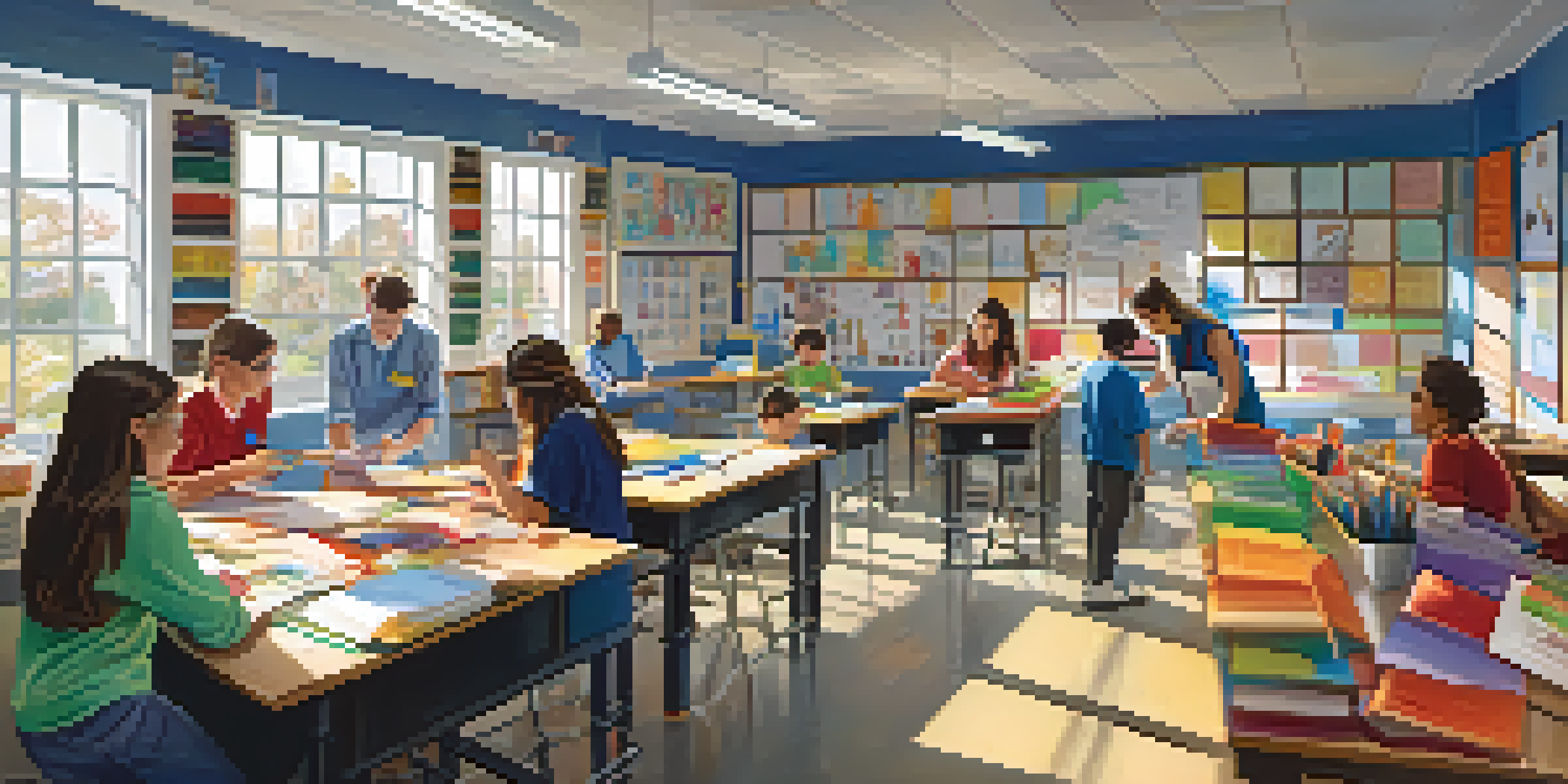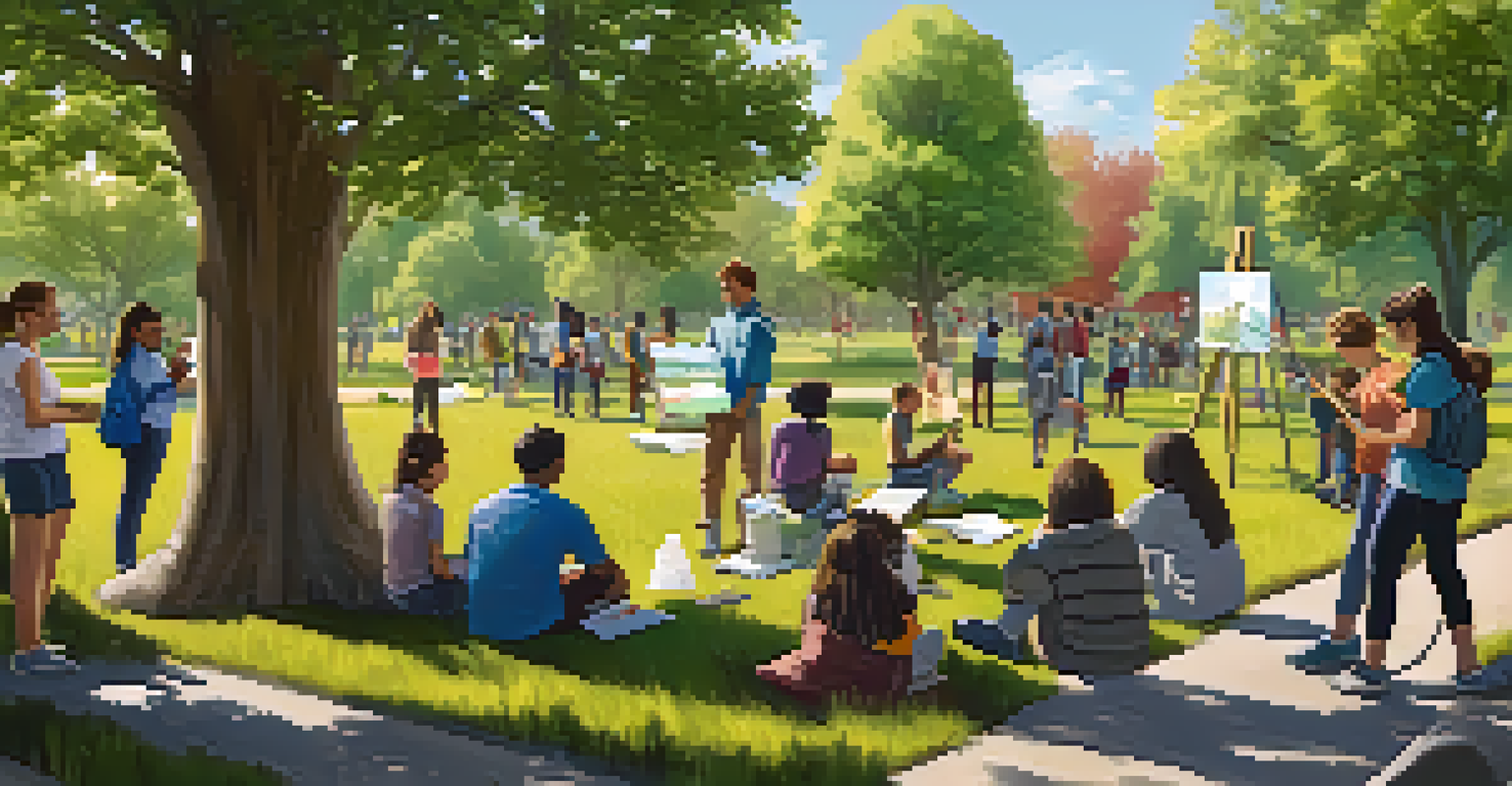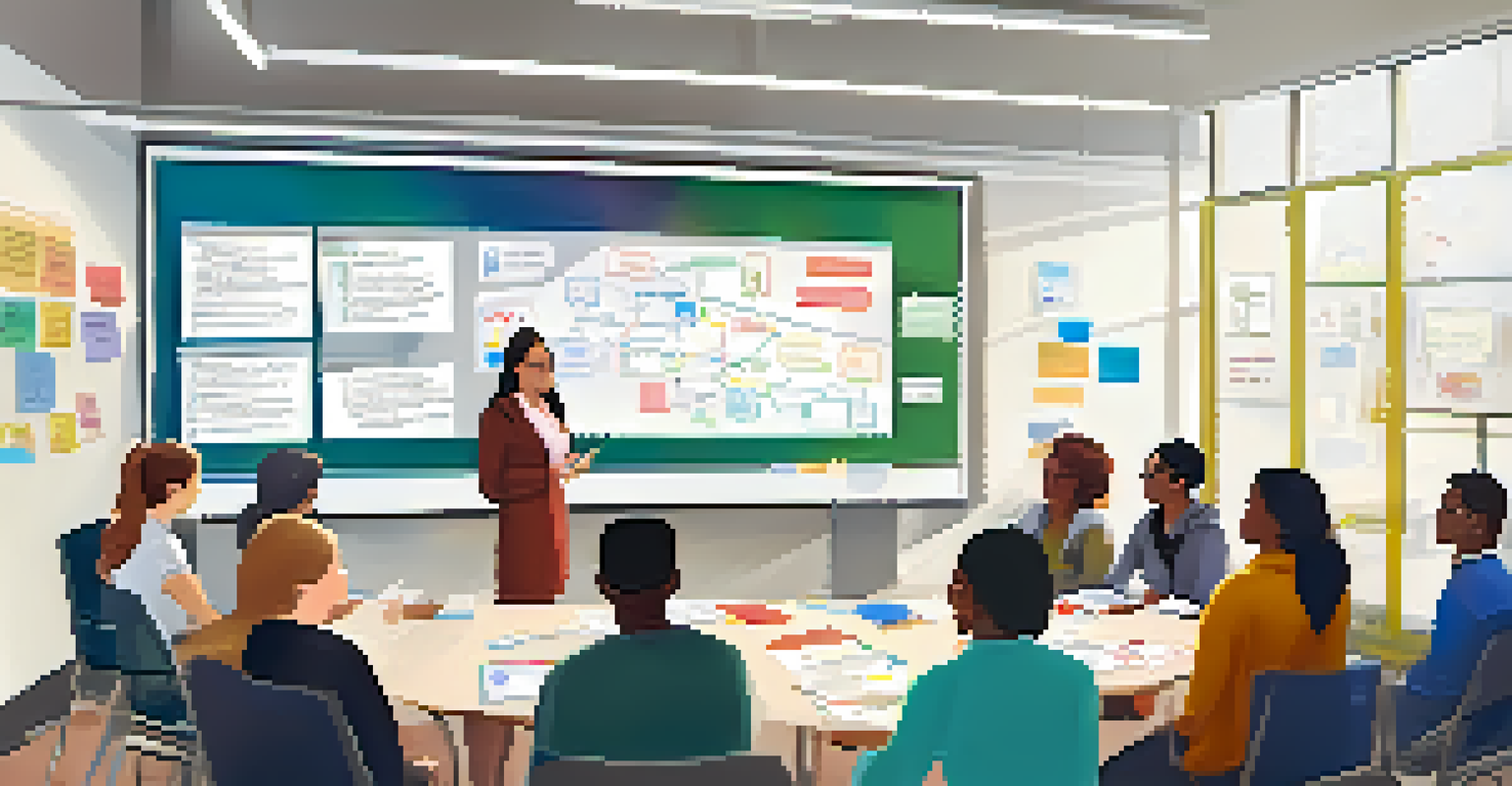The Importance of Cross-Disciplinary Collaboration in Schools

Understanding Cross-Disciplinary Collaboration in Education
Cross-disciplinary collaboration in schools refers to the teamwork between different subject areas, allowing educators to integrate various perspectives. For instance, a science teacher and an art teacher might collaborate on a project that explores the aesthetics of scientific phenomena. This approach not only enriches the curriculum but also mirrors real-world scenarios where different disciplines often intersect.
Collaboration allows teachers to capture each other's fund of collective intelligence.
Such collaboration promotes a more holistic approach to learning, fostering creativity and critical thinking. When students engage in projects that require input from multiple subjects, they learn to connect concepts and apply knowledge in diverse contexts. This method encourages them to see beyond the confines of traditional subjects, broadening their understanding of the world.
Moreover, cross-disciplinary collaboration helps to prepare students for the future workforce, which increasingly values adaptability and teamwork. By working alongside peers from different disciplines, students develop essential skills such as communication, problem-solving, and the ability to synthesize information from various sources.
Benefits of Collaborative Learning for Students
Collaborative learning promotes deeper understanding among students as they engage in discussions and share insights. When students from various backgrounds and skill sets come together, they bring unique perspectives that can enhance the learning experience. For example, a group project can spark conversations that lead to innovative solutions, as students learn to appreciate each other's strengths.

In addition to academic benefits, collaborative learning fosters social skills and emotional intelligence. Students learn to navigate group dynamics, manage conflicts, and build meaningful relationships with their peers. This social aspect of learning is crucial, as it prepares them for future interactions in both academic and professional settings.
Benefits of Cross-Disciplinary Work
Cross-disciplinary collaboration enriches education by fostering creativity, critical thinking, and real-world problem-solving skills.
Furthermore, collaboration can increase student motivation and engagement. When students feel that their contributions matter and are valued, they are more likely to take ownership of their learning. This sense of empowerment can lead to improved academic performance and a more positive attitude toward school.
Enhancing Teacher Collaboration for Better Outcomes
For cross-disciplinary collaboration to be successful, it’s essential that teachers work together effectively. By sharing resources, ideas, and teaching strategies, educators can create a more cohesive learning environment. For instance, a history teacher might collaborate with a literature teacher to explore historical texts, giving students a richer context for their studies.
The whole is greater than the sum of its parts.
Teacher collaboration also allows for professional development opportunities that benefit everyone involved. When teachers from different disciplines come together, they can learn from each other's experiences and expertise. This sharing of knowledge not only enhances their own practice but also positively impacts student learning outcomes.
Moreover, schools that foster a culture of collaboration tend to have higher levels of job satisfaction among teachers. When educators feel supported and connected, they are more likely to remain in their positions and contribute positively to the school community. This continuity can lead to a more stable environment for students, enhancing their overall educational experience.
Creating a Collaborative School Culture
To encourage cross-disciplinary collaboration, schools must cultivate a supportive culture that values teamwork. This can start with administrative support, where school leaders actively promote collaborative initiatives and provide the necessary resources. For instance, scheduling regular planning sessions and professional development focused on collaborative practices can set the foundation for success.
Additionally, fostering open communication among staff is vital for building trust and encouraging collaboration. When teachers feel comfortable sharing ideas and challenges, they are more likely to collaborate effectively. Creating platforms for dialogue, such as regular meetings or online forums, can help facilitate this communication.
Importance of Teacher Collaboration
Effective collaboration among teachers enhances professional growth and leads to better student learning outcomes.
Lastly, celebrating collaborative successes can reinforce the importance of teamwork within the school. Recognizing and showcasing projects that highlight cross-disciplinary efforts can inspire others to engage in similar initiatives, creating a ripple effect that enhances the entire educational community.
Real-World Applications of Cross-Disciplinary Projects
Real-world applications of cross-disciplinary projects can significantly enhance student engagement and learning. For example, a project that combines science and art might involve students creating a public art installation based on environmental themes. This not only reinforces scientific concepts but also allows students to express their understanding creatively.
Moreover, involving community members in these projects can provide students with valuable insights and feedback. Collaborating with local organizations or experts in various fields can help students understand the relevance of their studies in real life. For instance, partnering with a local business for a marketing project can give students practical skills while making their learning experience more meaningful.
These real-world applications also prepare students for future challenges by teaching them how to work across disciplines. As they navigate complex problems that require input from various areas of expertise, they develop the ability to think critically and adaptively—skills that are essential in today’s ever-changing world.
Challenges to Cross-Disciplinary Collaboration
Despite the numerous benefits, cross-disciplinary collaboration can face several challenges. One major hurdle is the lack of time within the school schedule, as teachers often find themselves overwhelmed with their own curriculum requirements. This limited time can hinder the opportunity for creative collaboration and project-based learning.
Additionally, differing pedagogical approaches and philosophies among teachers can create friction in collaborative efforts. For instance, a teacher who prefers structured lessons may struggle to align with a colleague who favors more open-ended projects. Finding common ground requires patience and a willingness to compromise on both sides.
Building a Supportive School Culture
Creating a supportive culture in schools encourages teamwork and open communication, essential for successful collaboration.
Finally, institutional barriers may also impede collaboration. Some schools have rigid departmental structures that discourage interdepartmental partnerships. To overcome these challenges, schools need to foster an environment that encourages flexibility, open-mindedness, and a commitment to shared goals.
The Future of Education: Embracing Collaboration
As we look to the future of education, the importance of cross-disciplinary collaboration will only continue to grow. With a rapidly evolving job market that demands a diverse skill set, schools must adapt by fostering environments where collaboration is the norm. By integrating subjects and encouraging teamwork, we can help students become more versatile and prepared for the complexities of modern life.
Additionally, technology plays a crucial role in facilitating collaboration. Online tools and platforms can connect students and teachers from different disciplines, allowing for innovative projects and discussions that transcend traditional classroom boundaries. For instance, virtual reality experiences can immerse students in collaborative learning environments, making lessons more engaging and interactive.

Ultimately, embracing collaboration in education not only enhances learning but also cultivates a sense of community among students and educators. By working together, we can create a more dynamic and inclusive educational landscape that prepares students for success in an interconnected world.